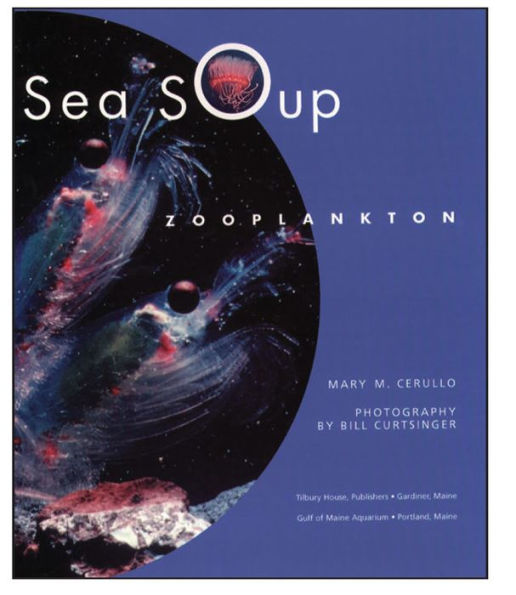What is the fastest animal in the world? What can dive as deep as a whale or make a submarine disappear in the ocean? The answer is zooplankton! The ocean is teeming with these small, drifting animals that come in all shapes ands sizes, from tiny zippy copepods to large, brilliantly colored jellyfish (that you don't want to bump into).
There are some very strange zooplankton, like the arrow worm — you can see what it had for lunch inside its stomach! Some zooplankton give off a ghostly underwater glow, and others are poisonous, like the sea wasp, a jellyfish that has killed more swimmers of Queensland in northern Australia than the great white shark.
Some zooplankton are "temporary" zooplankton, drifting along on ocean currents when they are young, but turning into fish or crustaceans when they grow up and swim on their own. Other zooplankton and zooplankton all their lives — or until they get eaten! Zooplankton are an important meal in the ocean food web. A single blue whale may devour up to eight tons of shrimp-like krill a day. That's a big serving of sea soup!
Bill Curtsinger's extraordinary photography brings us right into the watery world of zooplankton, while Mary Cerullo's lively text answers our questions about these fascinating ocean creatures.
What is the fastest animal in the world? What can dive as deep as a whale or make a submarine disappear in the ocean? The answer is zooplankton! The ocean is teeming with these small, drifting animals that come in all shapes ands sizes, from tiny zippy copepods to large, brilliantly colored jellyfish (that you don't want to bump into).
There are some very strange zooplankton, like the arrow worm — you can see what it had for lunch inside its stomach! Some zooplankton give off a ghostly underwater glow, and others are poisonous, like the sea wasp, a jellyfish that has killed more swimmers of Queensland in northern Australia than the great white shark.
Some zooplankton are "temporary" zooplankton, drifting along on ocean currents when they are young, but turning into fish or crustaceans when they grow up and swim on their own. Other zooplankton and zooplankton all their lives — or until they get eaten! Zooplankton are an important meal in the ocean food web. A single blue whale may devour up to eight tons of shrimp-like krill a day. That's a big serving of sea soup!
Bill Curtsinger's extraordinary photography brings us right into the watery world of zooplankton, while Mary Cerullo's lively text answers our questions about these fascinating ocean creatures.

Sea Soup: Zooplankton
40
Sea Soup: Zooplankton
40Hardcover

Product Details
| ISBN-13: | 9780884482192 |
|---|---|
| Publisher: | Tilbury House Publishers |
| Publication date: | 01/01/2001 |
| Pages: | 40 |
| Product dimensions: | 9.40(w) x 10.40(h) x 0.40(d) |
| Lexile: | NC1120L (what's this?) |
| Age Range: | 8 - 12 Years |
